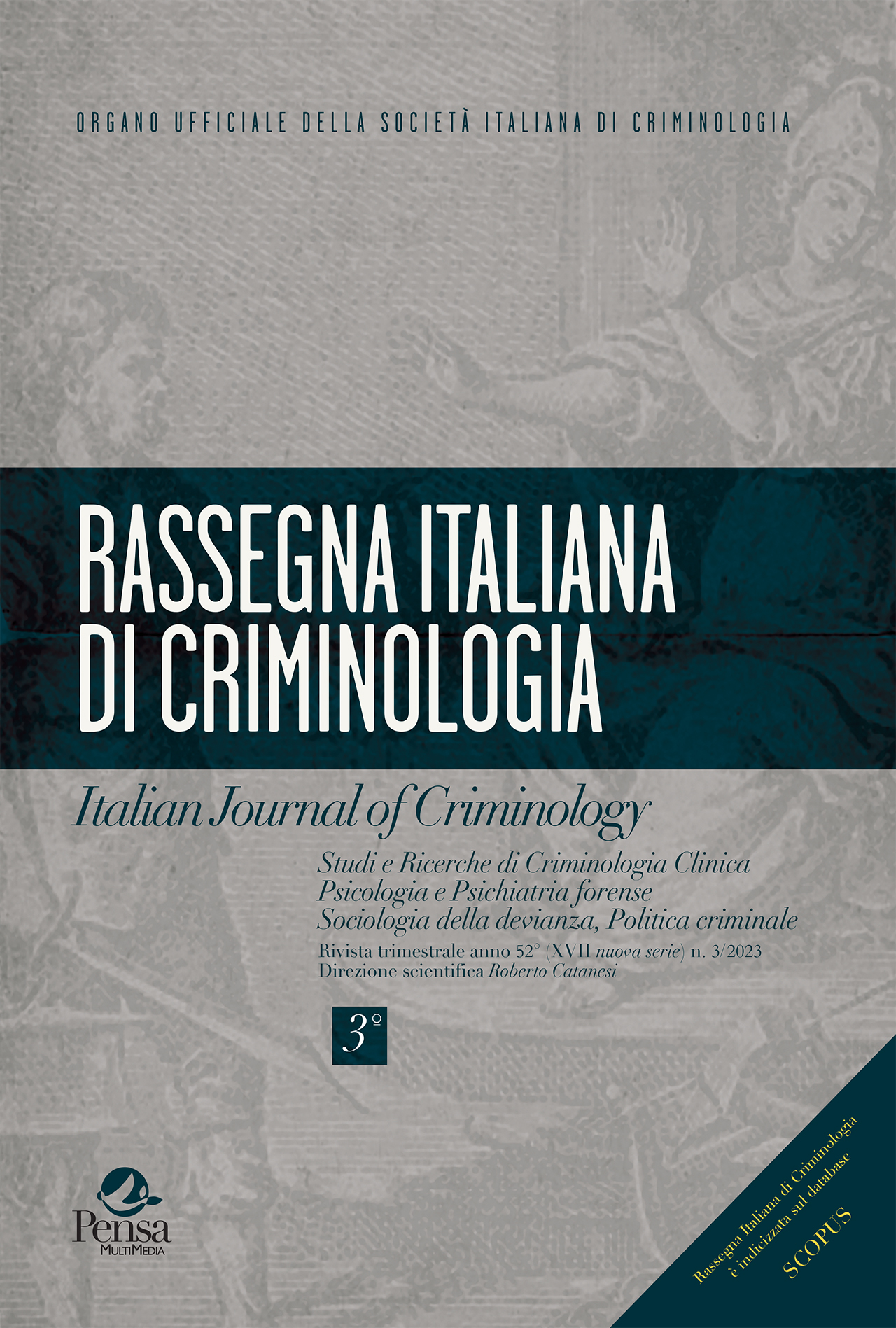Youth deviance, urban security and ‘moral panic’: the case of Italy
DOI:
https://doi.org/10.7347/RIC-032023-p198Abstract
American sociological research and prevention policies on youth deviance and juvenile street gangs have a very long tradition. Since the mid-1990s, in some European Countries, youngsters’ antisocial behaviors in public spaces gained terrain in criminological studies and on the public and political debates. In Italy, instead, youth has not been traditionally meant as a ‘security’ problem, but rather as a matter
of educational and social policies. In recent years, however, also in the Italian context urban violence of juvenile street groups has become a recurrent topic in media representation, a source of citizens’ insecurity and an issue to be solved by local security policies. Even though from classical approaches street gangs appeared as a complex phenomenon (aggregations involved in criminal acts but, at the
same time, types of socialization for youth having a migratory background), there is the tendency to describe street groups according to a unitary and criminalizing ‘gang’ model. The aim of the article is to situate the study of youth street groups within the broader topic of juvenile delinquency in Italy. Moving from how the youth question evolved in Italian debate and policies, socialization practices as well as
deviant behaviors of youngster in public spaces are analyzed. The difficulty for young people from the marginal strata to access a structured sociality located in certain urban spaces risks resulting in a subordinate social role and, eventually, in violence as a reaction in search of visibility. The ultimate goal of the article is to provide a reinterpretation of street groups that is not oversimplified and that pays attention
to processes of inclusion/exclusion within the social structure, urban space, and the related conflict dynamics.





